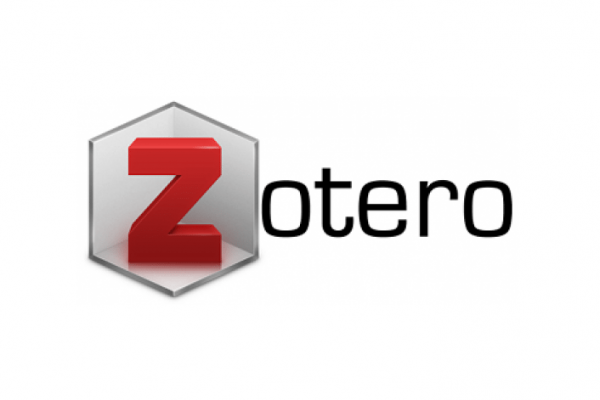Application of Audiolingual Method in Active Arabic Language Learning for Visually Impaired Students
Abstract
Keywords
Full Text:
PDFArticle Metrics
Abstract view : 205 times | PDF view : 104 timesReferences
Abidin, Y. (2017). Developing Literacy Learning Model Based On Multi Literacy, Integrated, and Differentiated Concept At Primary School. Jurnal Cakrawala Pendidikan, 36(2), Article 2. https://doi.org/10.21831/cp.v36i2.13283
Ahmadi-Azad, S., Asadollahfam, H., & Zoghi, M. (2020). Effects of teacher’s personality traits on EFL learners’ foreign language enjoyment. System, p. 95, 102369. https://doi.org/10.1016/j.system.2020.102369
Ainin, M., Ahsanuddin, M., Irhamni, I., Arifianto, M. L., Dariyadi, M. W., & Ibrahim, F. M. A. (2021). Analyzing Errors in Lesson Plans of Arabic Teacher Professional Education Participants During the Teaching Practise at Schools. Al-Ta’rib : Jurnal Ilmiah Program Studi Pendidikan Bahasa Arab IAIN Palangka Raya, 9(2), Article 2. https://doi.org/10.23971/altarib.v9i2.3043
Al-Mahrooqi, R., Denman, C., Al-Siyabi, J., & Al-Maamari, F. (2015). Characteristics of a Good EFL Teacher. SAGE Open, 5(2), 2158244015584782–2158244015584782.
Alvi, A. H., & Alvi, R. (2020). Text, Reader & Pedagogy: A Reflection Upon Teaching English Poetry to EFL Female Students at a Saudi Arabian University (SSRN Scholarly Paper 3512523). https://doi.org/10.2139/ssrn.3512523
Arlin, P. K. (1999). The wise teacher: A developmental model of teaching. Theory Into Practice, 38(1), 12–17. https://doi.org/10.1080/00405849909543825
Bandura, A. (1986). Social foundations of thought and action: A social cognitive theory (pp. xiii, 617). Prentice-Hall, Inc.
Bhargava, A., & Pathy, M. (2011). Perception of Student Teachers about Teaching Competencies. American International Journal of Contemporary Research.
Bramwell, G., Reilly, R. C., Lilly, F. R., Kronish, N., & Chennabathni, R. (2011). Creative Teachers. Roeper Review, 33(4), 228–238. https://doi.org/10.1080/02783193.2011.603111
Dajani, B. A. S., Mubaideen, S., & Omari, F. M. A. (2014). Difficulties of Learning Arabic for Non-native Speakers. Procedia - Social and Behavioral Sciences, 114, 919–926. https://doi.org/10.1016/j.sbspro.2013.12.808
ElHawari, R. (2020). Teaching Arabic as a Heritage Language. Routledge.
Fast, D. K. (2018). Including Children with Visual Impairments in the Early Childhood Classroom. In Early Childhood Education. IntechOpen. https://doi.org/10.5772/intechopen.80928
Foley-Nicpon, M. (2016). The Social and Emotional Development of Twice-Exceptional Children. In The Social and Emotional Development of Gifted Children (2nd ed.). Routledge.
Gunaryo, A., Sunarini, Muhamad, M., Basri, H. H., Durachman, Y., & Shamsu, L. S. (2021). INCRE 2020: Proceedings of the 2nd International Conference on Religion and Education, INCRE 2020, 11-12 November 2020, Jakarta, Indonesia. European Alliance for Innovation.
Hakim, A., & Kamal, M. (2018). Improving Arabic Academic Writing Skills Through Contextual Teaching and Learning Approach. Alsinatuna, 3(2), 183–199. https://doi.org/10.28918/alsinatuna.v3i2.1169
Hallahan, D. P., Pullen, P. C., Kauffman, J. M., & Badar, J. (2020). Exceptional Learners. In Oxford Research Encyclopedia of Education. https://doi.org/10.1093/acrefore/9780190264093.013.926
J.Moleong, L. (2015). Metodelogi Penelitian Kualitatif. PT Remaja Rosdakarya Bandung.
Johnson, M. (2004). A Philosophy of Second Language Acquisition. Yale University Press. https://www.jstor.org/stable/j.ctt1npz5q
Lu, J., & Throssell, P. (2018). University students’ preferences and experience: Is there a role for the CLCOEL? Cogent Education, 5(1), 1542953. https://doi.org/10.1080/2331186X.2018.1542953
Ma’ali, A., Ibrahim, F. M. A., & Syuhadak, S. (2022). The Social Foundations For Developing The Arabic Language Curriculum According to Ahmad Fuad Effendy/ ????? ?????????? ?????? ???? ????? ????? ??????? ??? ???? ???? ?????. Ijaz Arabi Journal of Arabic Learning, 5(1), Article 1. https://doi.org/10.18860/ijazarabi.v5i1.13543
Maftuhaturohmah, M. (2020). The Implementation of Inclusive Education in Arabic Learning for Blind Students/ ????? ??????? ??????? ?? ????? ????? ??????? ???????? ???????? ??? ?????. ATHLA : Journal of Arabic Teaching, Linguistic and Literature, 1(2), 138–152. https://doi.org/10.22515/athla.v1i2.3439
Mahboob, A., & Tilakaratna, N. (2012). A principles-based approach for English language teaching policies and practices. Mountain View, CA: TESOL International Association.
Mansyur, A. R. (2021). Wawasan Kepemimpinan Guru (Teacher Leadership) dan Konsep Guru Penggerak. Education and Learning Journal, 2(2), Article 2. https://doi.org/10.33096/eljour.v2i2.113
McLeod, J., & Treuer, K. von. (2013). Towards a Cohesive Theory of Cohesion. International Journal of Business and Social Research, 3(12), Article 12. https://doi.org/10.18533/ijbsr.v3i12.338
Mustofa, S., Febriani, S. R., & Ibrahim, F. M. (2021). The Improvement of Arabic Language Learning Program in Realizing the World Class University. Jurnal Al Bayan: Jurnal Jurusan Pendidikan Bahasa Arab, 13(1), Article 1. https://doi.org/10.24042/albayan.v13i1.7705
Nagaraj. (1996). English Language Teaching: Approaches, Methods, Techniques. Orient Blackswan.
Richards, J. C. (2006). Communicative Language Teaching Today. Cambridge University Press.
Ritonga, M., Armini, A., Julhadi, J., Rambe, M. H., & Jaffar, M. N. (2023). Audiolingual Method in Arabic Learning. Jurnal Al Bayan: Jurnal Jurusan Pendidikan Bahasa Arab, 15(1), Article 1. https://doi.org/10.24042/albayan.v15i1.15449
Schwartz, S. (2013). Psychology Library Editions: Psycholinguistics. Psychology Press.
The Direct Method: A Good Start to Teach Oral Language. (n.d.). International Journal of English Language Teaching (IJELT). Retrieved December 4, 2023, from https://eajournals.org/ijelt/vol-5-issue-1-january-2017/direct-method-good-start-teach-oral-language/
Wiener, W. R., Welsh, R. L., & Blasch, B. B. (2010). Foundations of Orientation and Mobility. American Foundation for the Blind.
DOI: https://doi.org/10.23971/altarib.v11i2.7544
Refbacks
- There are currently no refbacks.
Copyright (c) 2023 Ridwan Efendi, Nurul Wahdah, Kamaludin, Ali Sadikin, Asmawati, Sardimi

This work is licensed under a Creative Commons Attribution-ShareAlike 4.0 International License.
Indexed By:
Tool:




Al-Ta'rib : Jurnal Ilmiah Program Studi Pendidikan Bahasa Arab IAIN Palangka Raya is published by Arabic Education Departement (PBA), the Faculty of Education and Teacher Training (FTIK),� State Islamic Institut (IAIN) of Palangka Raya in partnership with IMLA (Association of Arabic Lecturers).
Editor and Administration Address:
Arabic Education Departement (PBA), the Faculty of Education and Teacher Training (FTIK),� State Islamic Institut (IAIN) of Palangka Raya, Jalan G. Obos Komplek Islamic Centre Palangka Raya, Kalimantan Tengah, Indonesia, Postal Code 73111.Email: [email protected]/[email protected], Website: http://e-journal.iain-palangkaraya.ac.id/index.php/tarib
This work is licensed under a Creative Commons Attribution-ShareAlike 4.0 International License.



















